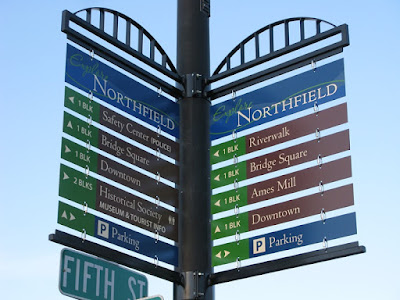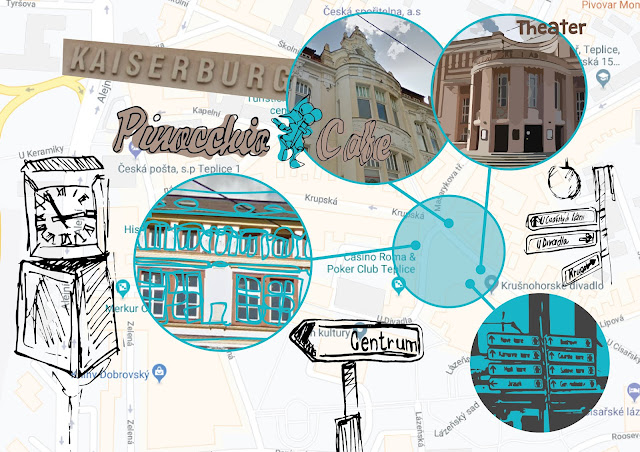WEEK 3 | Session Notes
Wayfinding & Signage Design
-not just about designing signs => you need to think about what job it does, who is it for,...
Where to?
-getting lost takes us out of our comfort zone
-anything that can help us to get from A to B is a good thing
Wayfinding
-elements of science, psychology, semiotics and design
In nature
-animals have inbuilt sense of direction = going back to nests, hives, etc
-they have certain amount of iron particles (connected to the magnetic north)
Wayfinding with humans
-humans have developed their own methods of navigating using mainly memory and logic
-humans used to have the same practices in the past
Human Navigation
Landmarks-humans navigate using Landmarks, for example a well known building, hill, river can give you an idea on where you are
Song lines
-traditional songs are way of navigation
Drover's Trees
-the men who drove the 'Drovers' would plant tall Scots Pine on high hills so that eventually future drovers could use them as navigation markers
-trees that look unnatural and stand out
Modern Life
Transport-brings different navigational needs
-how to get to the right platform, how to find a product at a superstore or which road to take
Good Wayfinding design is invisible
-our lives are more complexed and sophisticated and 'wayfinding' sings are now part of our lives
-so effective are they that we don't really notice them, they just work
Graphical Language
Audiences
-successful wayfinding means developing a graphic language that is obvious to a lay audience or people in the street
Location of wayfinding
-this must be relevant to the place it's in and give the audience the relevant information when and where they need it
Critical Signage
-as well as being a technical challenge to create effectively, wayfinding signage can carry responsibility too - especially in emergency situation where every second of reaction time could be crucial
Mental Maps
-wayfinding works by giving and audience the visual information they need to create a mental map of a building or environment
-one of the main challenges with institutional buildings is that they're often similar in layout or a number of floors
Zones
-good wayfinding creates a dsitnctive feeling for separate areas
-this way audiences find them easier to identify and separate - to see how one zone relates to another
Not just a sign
-lighting, wall colour, floor finishes, prints or even plants and sculptures can help create enough of a difference to help differentiate
Importance of numbers and symbols
-finally add clear numbering, directional icons, arrows
Types of signs
Orientational
-map, exploded views, plans, landmarks
Infomational
-time-tables, industrial estate boards
Directional
-navigation systems - hospitals, airports
Identificational
-labelling devices i. e. certain buldings, work of art: Tower Bridge, etc
Statutory
-rules, safety, legal notices, fire regulations
Ornamental
-banners, flags, commemorative plaque
Key issues for good signage
1) Considerations
-is it geographically suitable?
-who will the users be? (public, deliveries, emergency services)
-are there accessibility issues?
-eye-level
2) Design Considerations
-Location - outside, durable, legible in poor lighting
-Audience - families, walkers
-Specialist elements - considerations given to visually impaired, braille, raised image, tactile, appealing to children
3) Style of the sign
-Keep it simple - roadside sign
-Legibility - must be visible to appropriate audience
-Typography important - upper and lower case easier to read ideally sans serif such as Frutiger, Arial, Helvetica
4) Letter Forms
-Sign colour-conveys different things
-corporate considerations - in institutions there are sometimes corporate colour considerations
5) Position
-Can you see all required - is it within the audiences' field of vision? Signs often need to be placed at or around head height of pedestrians
6) Lighting
-signs within tunnels often illuminated road signs often reflective so helps stand out
-buildings often have internal lighting and hence this may affect placement of signs
7) Legal Consideration
-is there consent for siting a sign
- is there anyone who would need to be consulted?
-costing considerations - the materials used in various signs depends on sign longevity, internal or external use and also pure cost of different materials.
-are there accessibility issues?
-eye-level
2) Design Considerations
-Location - outside, durable, legible in poor lighting
-Audience - families, walkers
-Specialist elements - considerations given to visually impaired, braille, raised image, tactile, appealing to children
3) Style of the sign
-Keep it simple - roadside sign
-Legibility - must be visible to appropriate audience
-Typography important - upper and lower case easier to read ideally sans serif such as Frutiger, Arial, Helvetica
4) Letter Forms
-Sign colour-conveys different things
-corporate considerations - in institutions there are sometimes corporate colour considerations
5) Position
-Can you see all required - is it within the audiences' field of vision? Signs often need to be placed at or around head height of pedestrians
6) Lighting
-signs within tunnels often illuminated road signs often reflective so helps stand out
-buildings often have internal lighting and hence this may affect placement of signs
7) Legal Consideration
-is there consent for siting a sign
- is there anyone who would need to be consulted?
-costing considerations - the materials used in various signs depends on sign longevity, internal or external use and also pure cost of different materials.
Creating a sign -> simple process
1) Design of the signs - taking in previous considerations
2) User testing of signs ideas in appropriate environment
3. Installation of the signs


Comments
Post a Comment